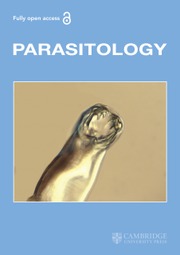Since the renowned fish parasitologist Professor Clive R. Kennedy from the University of Exeter (UK) published the classical treatise Ecological Animal Parasitology (Blackwell Scientific Publications) in 1975, this green book has been the companion and inspiration of numerous parasitologists with interest in ecology. The book created a sound basis for parasitological investigations and parasitology courses throughout academic societies, from East to West and South to North. Since then, 50 years have passed, and methods within all scientific fields have developed immensely. This goes for parasitology as well, and during recent years, we could feel the need for a modern textbook to serve eco-parasitologists and especially the ones with a special interest in aquatic interactions. Now it is here. Professors Nico J. Smit (South Africa) and Bernd Sures (Germany) have edited a new book on Springer Nature with the title Aquatic Parasitology: Ecological and Environmental Concepts and Implications of Marine and Freshwater Parasites.
The content
We have now a total of 662 pages with specialist chapters on most elements within aquatic parasitology. In 23 chapters, nicely illustrated by colour pictures and drawings (Figure 1), assisted by a comprehensive glossary and a species list of parasites, hosts and vectors, the reader is introduced to all main fields within the topic. The editors have gathered no less than 50 scientists (specialists within their respective fields) to write up the chapters. The editors have been actively engaged in writing up many of the chapters and appear as co-authors in several of them.

Figure 1. The front cover of the new book on aquatic parasitology with a glimpse of some of the numerous illustrations provided.
The editors introduce this scientific field in their first chapter ‘Introduction to Aquatic Parasitology: Ecological and Environmental Concepts and Implications of Marine and Freshwater Parasites’. Then specialist colleagues present the basic anatomy and physiology on all types of parasites from protists, microsporidia, fungi, myxozoans, helminths and arthropods, whereafter updates on ecological principles pave the way to more specific fields of host and parasite biodiversity, ecosystem health, host community structure and evolution/coevolution.
Novel methods
Very importantly, the chapters present methodological progress within parasitology.
One of the main developments since the 1970s is the widespread use of molecular methods, which at present are indispensable for almost all fields within parasitology. The use of DNA and/or RNA methods can clearly be used for studies on population genetics, evolution, taxonomy, diversity, conservation and parasite interactions. Within this context, the use of environmental DNA has an important place in one of the chapters.
Theory and application
Both theoretical and applied approaches to aquatic parasitology have prominent places in the book. Here, the use of parasites as biological tags of different fish stocks has been given a special chapter. This applied discipline within fish parasitology has assisted fishery biologists in numerous stock discrimination studies in all major marine regions of the world. Other applied ecological elements face the reader with toxicology and aquatic pollution and climate change. The interaction between marine mammals, invertebrates and fish is treated as a basic ecological discipline with wide implications also for humans due to the well-described zoonotic potential of helminths (trematodes, cestodes and nematodes). The impact of parasites on aquaculture production has been given a special chapter. This industry is currently playing an increasing role in the global production of animal protein, and parasitic infections represent a major challenge to its success. It is worth to look into creative solutions for control, and the basic concepts on ecology of parasites, given in this new book, can serve as an inspiration for innovation.
The drop of wormwood
The eco-book will be the parasitologist’s companion for many years from now. However, a minor drop of wormwood can be dropped into the drink: if one should point to a field needing further attention, it is immunology. The reader would have loved a special chapter related to aquatic immunology. Connecting the inner ecosystem in the hosts and the external ecosystem around them. The chapters on toxicology, climate and aquaculture have indeed placed some emphasis on some aspects of this basic physiological host function, which has a strong influence on both hosts and parasites. However, a devoted section could serve as an important inspiration to all types of parasitologists. However, this should not shade for an overall positive evaluation of this new book. Thanks to the editors and all the authors for publishing this lovely book. It is a source of inspiration to all ecologists in general, and it can serve as a splendid basis for inspiring parasitology courses. It can easily be downloaded and used for new generations of aquatic parasitologists throughout the world.




